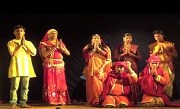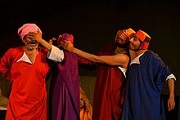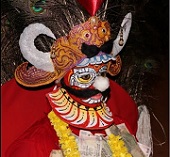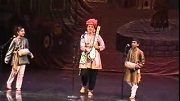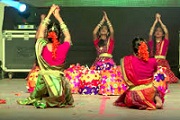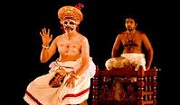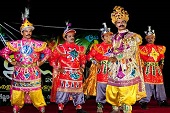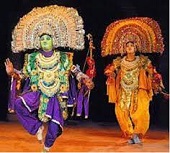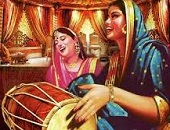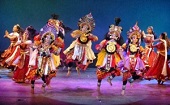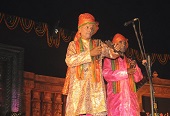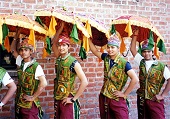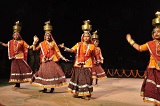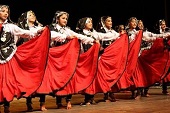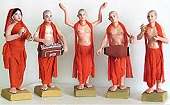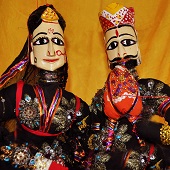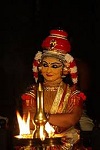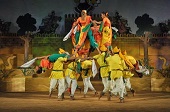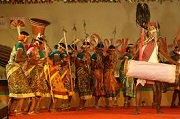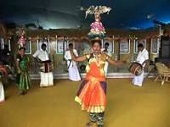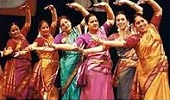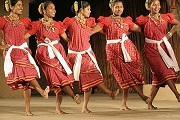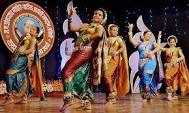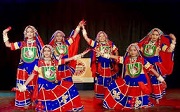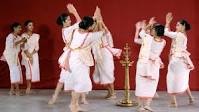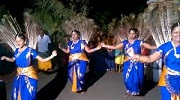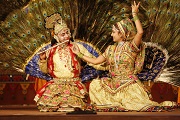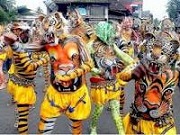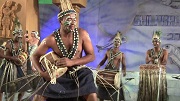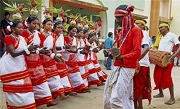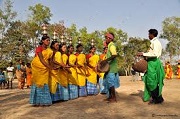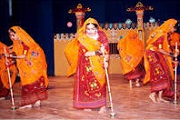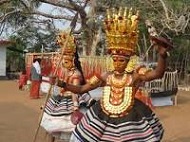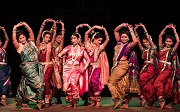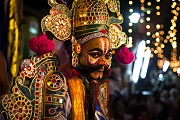 Introduction
Introduction
India is a land of diverse cultures and traditions which make it unique and interesting to explore. Indian Dance Forms - Folk/Classical are an amalgamation of different cultures, social & economic influences and traditions evolved over ages. In India, there are festivals and celebrations observed virtually every day, and dances are performed to express joy and festivity. The dances and festivals and celebrations add significantly to the richness of Indian culture.This article presents different Indian Dance Forms.
 Dances
Dances
Indian Classical Dance form, also known as or Shastriya Nritya, is primarily determined as various performance arts rooted in religious Hindu musical theater styles, whose roots can be traced to the Sanskrit text Natya Shastra. Indian Classical Dance is known as one of the most comprehensive and oldest dance forms in the world. Nritya [ term for dance] is an amalgamation of gestures and facial expressions that portrays the poetic and/or emotional meaning along with rhythmic gaits and postures. The below table presents the list of Indian Classical Dance Forms.
The folk dances in India are performed for every possible occasion - to celebrate the arrival of seasons, birth of a child, at a wedding and primarily during festivals. The folk dances are full of energy, vibrancy and vitality and at the same time very simple with minimum dance moves. Some dances have both men and women dancing together while some dances are performed separately by men and women. Fold dances are known for On most occasions, the dancers sing themselves, accompanied by artists with instruments. A folk dance form has a specific costume and rhythm. Most of the costumes, worn for folk dances, are colorful with extensive jewels and designs representing the culture of the community. There are numerous ancient folk and tribal dances.
Folk dances are performed for each conceivable event - to praise the landing of seasons, birth of a kid, a wedding and celebrations, which are plenty. The Folk dances are extremely simple with least of steps or movement. The moves of Indian people are brimming with vitality and essentials. A few moves are performed independently by people while in a few exhibitions people move together. On most events, the artists sing themselves, joined by craftsmen with instruments. Each type of a move has an explicit ensemble and mood. The majority of the outfits, worn for, are bright with broad gems and structures. How about we view people moves of India.Indian Folk Dances are a means of celebration and expression of feelings. Below table lists some of the well known Indian Folk Dances.
| Dance Forms | State of Origin | Picture |
|---|---|---|
| Ankiya Nat | Assam | |
| Bidesia | Bihar | |
| Bhavai | Gujarat | |
| Bhand Pather | Jammu and Kashmir | |
| Bedara Vesha | Karnataka | |
| Burrakatha | Andhra Pradesh | |
| Bathukamma | Telangana | |
| Chakyar koothu | Kerala | |
| Chavittu Nadakam | Kerala | |
| Charukala | Uttar Pradesh | |
| Chholiya | Uttrakhand | |
| Chhau (Purulia) | West Bengal | |
| Dangi Nritya | Gujarat | |
| Domkach | Jharkhand | |
| Dollu Kunitha | Karnataka | |
| Doddata-Bayalata | Karnataka | |
| Daskathia | Orissa | |
| Devarattam | Tamil Nadu | |
| Dekhni | Goa | |
| Garba | Gujarat | |
| Ghoomar | Rajasthan | |
| Ghode modni | Goa | |
| Hudo | Gujarat | |
| Jhijhiya | Bihar | |
| Jat-jatin | Bihar | |
| Jhumar | Jharkhand | |
| Kirtania Natak | Assam | |
| Kathaputli | Bihar | |
| Karma | Bihar | |
| Kariyala | Himachal Pradesh | |
| Kodiyattam | Kerala | |
| Koli dance | Maharashtra | |
| Khyal | Rajasthan | |
| Koya | Andhra Pradesh | |
| Karakaattam | Tamil Nadu | |
| Kaavadi attam Puliattam | Tamil Nadu | |
| Kurvaanji | Tamil Nadu | |
| Kolattam | Tamil Nadu | |
| Kunbi dance | Goa | |
| Lavani | Maharashtra | |
| Lambadi | Andhra Pradesh | |
| Margam Kali | Kerala | |
| Mayurbhanj Chhau | Orissa | |
| Maylattam | Tamil Nadu | |
| Mayur Nritya | Uttar Pradesh | |
| Puli Kali | Kerala | |
| Siddi Dhamal | Gujarat | |
| Sarhul | Jharkhand | |
| Santhali | West Bengal | |
| Tippani Dance | Gujara | |
| Thirayattam | Kerala | |
| Tamasha | Maharashtra | |
| Therukoothu | Tamil Nadu |













